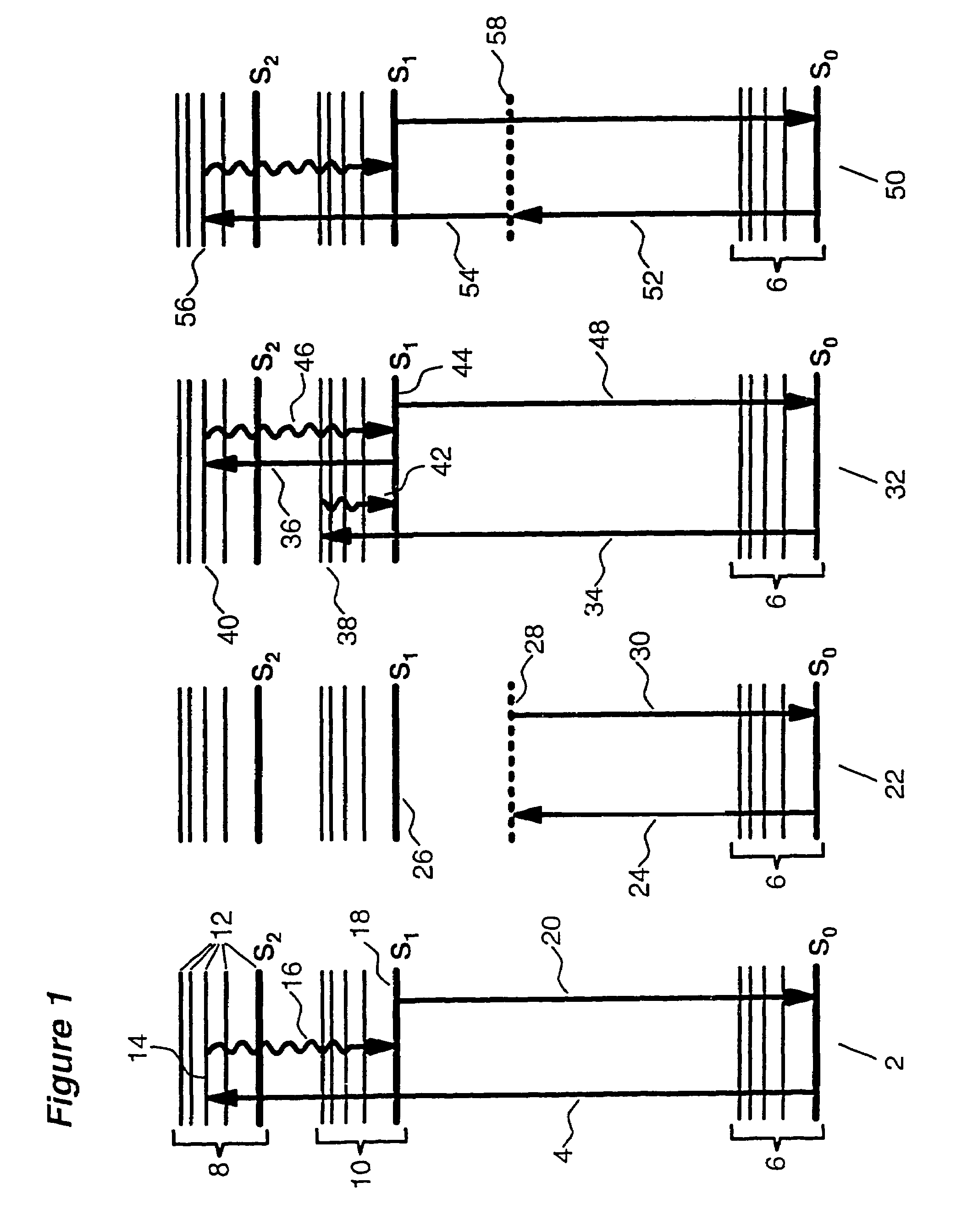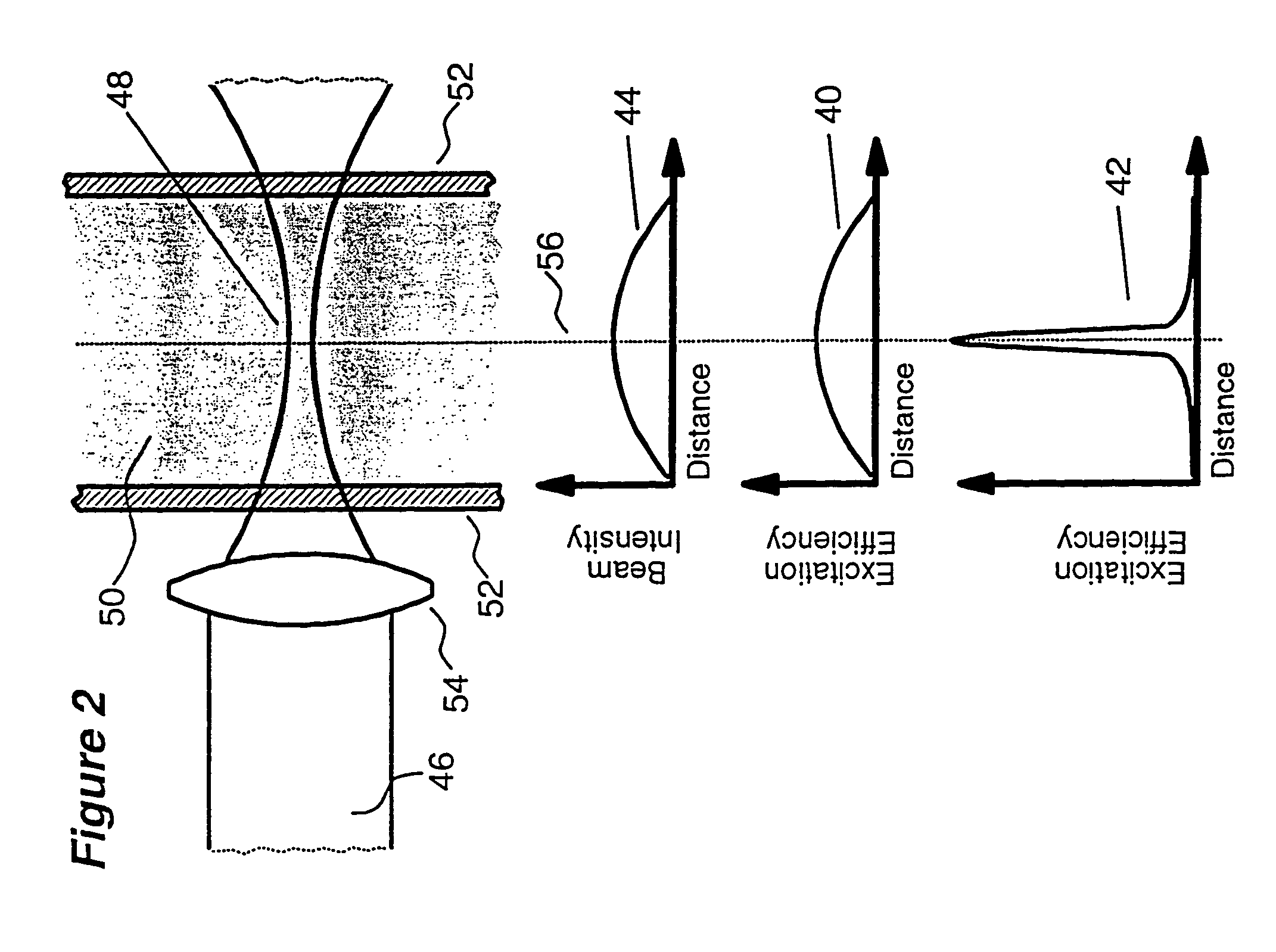Methods for improved selectivity in photo-activation and detection of molecular diagnostic agents
a molecular diagnostic agent and selectivity technology, applied in the field of improved selectivity in photoactivation and detection of molecular diagnostic agents, can solve the problems of inability to achieve the performance and applicability of linear methods, the performance of linear methods has not always been as successful as desired, and the use of molecular probes to excite can produce diseases in humans and animals
- Summary
- Abstract
- Description
- Claims
- Application Information
AI Technical Summary
Benefits of technology
Problems solved by technology
Method used
Image
Examples
second exemplary embodiment
OF THE INVENTION
[0089]As an alternate to this preferred embodiment, a modulation means may be incorporated into the general embodiment shown in FIG. 11; such modulation means may be used to improve overall performance of the imaging system, such as to improve rejection of environmental or instrumental noise sources, to enable recovery of pure two-photon excited emission at the second harmonic, or to facilitate detection of emitted light using phase photometric approaches. Specifically, FIG. 12 shows that a modulator means 136, such as an electro-optic or acousto-optic modulator, a chopper, or other means, located so as to interact with the beam of NIR radiation 110 emitted by the NIR source 108 can be used to encode the beam of NIR radiation 110 with a modulation pattern that is registered to the output of a modulator driver 138 that provides a drive signal 140 to the modulation means 136. The modulated beam of NIR radiation 142 thereby produced is then directed onto the specimen 11...
third exemplary embodiment
OF THE INVENTION
[0090]As a second alternate to this preferred embodiment, an unfocused beam of NIR radiation may be used to illuminate superficial features of a specimen to provide a direct imaging means of detection. This is shown in FIG. 13. Specifically, the output of a NIR source, such as the mode-locked titanium:sapphire laser, can be used to induce simultaneous two-photon photo-activation of endogenous or exogenous diagnostic imaging agents present on or near the surface of a specimen using light at a wavelength approximately twice that necessary for conventional single-photon photo-activation. The NIR Source 108 produces a beam of NIR radiation 110 consisting of a rapid series of high peak power pulses of NIR radiation. This beam is modulated using a modulator means 136 located so as to interact with the beam of NIR radiation 110 emitted by the NIR source 108. This modulator means 136 encodes the beam of NIR radiation 110 with a modulation pattern that is registered to the ou...
PUM
 Login to View More
Login to View More Abstract
Description
Claims
Application Information
 Login to View More
Login to View More - R&D
- Intellectual Property
- Life Sciences
- Materials
- Tech Scout
- Unparalleled Data Quality
- Higher Quality Content
- 60% Fewer Hallucinations
Browse by: Latest US Patents, China's latest patents, Technical Efficacy Thesaurus, Application Domain, Technology Topic, Popular Technical Reports.
© 2025 PatSnap. All rights reserved.Legal|Privacy policy|Modern Slavery Act Transparency Statement|Sitemap|About US| Contact US: help@patsnap.com



